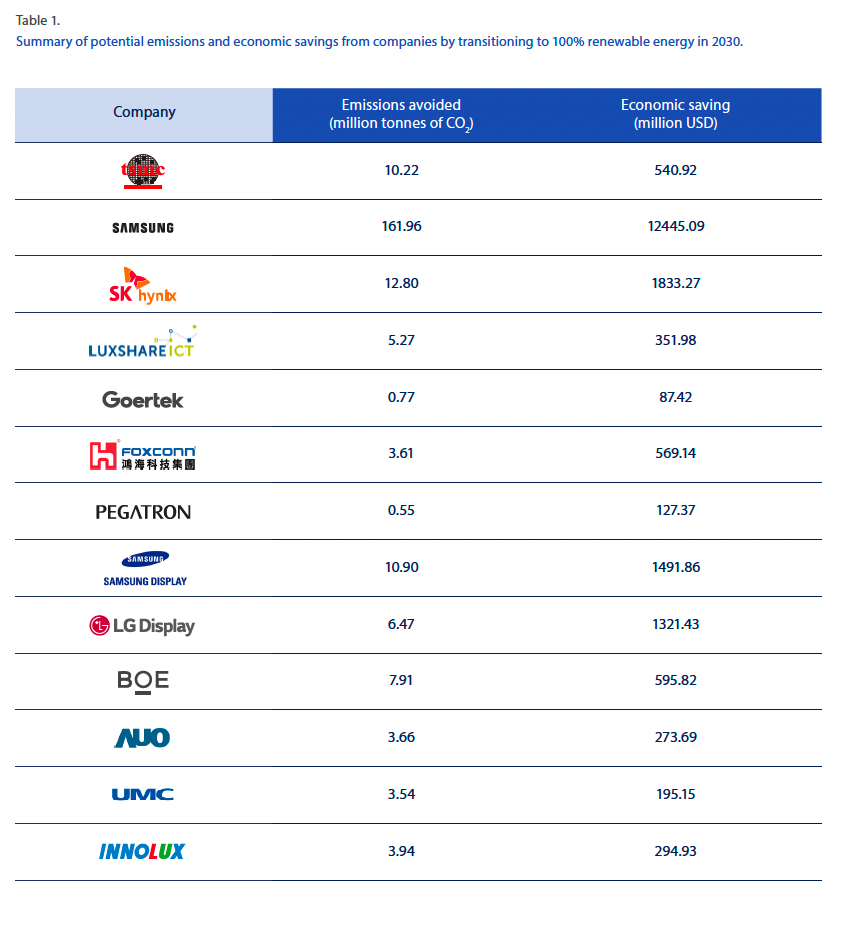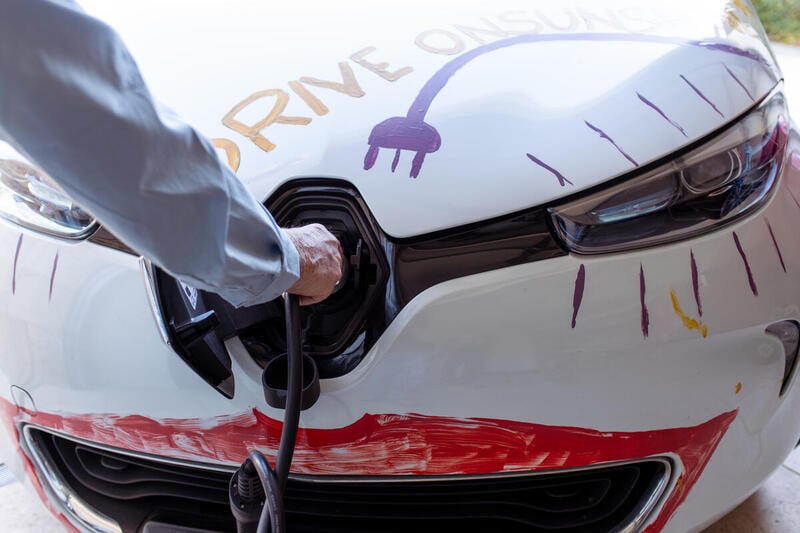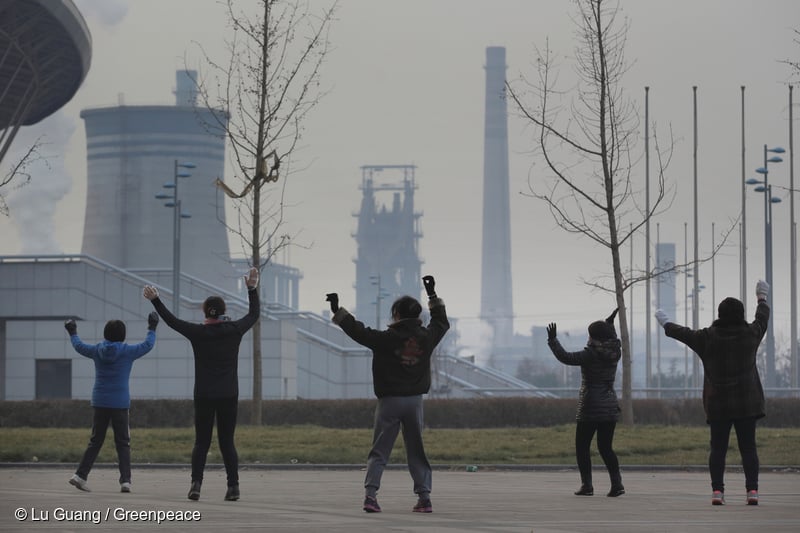HONG KONG, June 13, 2024 – Electronics manufacturers could save billions of US dollars by transitioning to 100% renewable energy by 2030, according to a new study by Greenpeace East Asia and the City University of Hong Kong.
The study, the first of its kind, found that savings of between USD 87.42 million and USD 12.45 billion per company could be achieved by making the transition to 100% renewable energy by 2030. The study examined emissions and associated financial costs for 13 of the largest electronics manufacturers in East Asia, including Samsung Electronics, Foxconn, and TSMC. [1] It found that if all of the manufacturers were to achieve 100% renewable energy by 2030, their combined CO2 emissions for the year 2030 could decrease by 231.6 million tonnes. Such a reduction would exceed the total emissions of the Netherlands. [2]
Greenpeace East Asia climate and energy campaigner Xueying Wu said:
“Due to rapid growth in AI, Internet of Things and smartphones, electricity consumption from electronics manufacturing is on the rise. Unfortunately, this means that the electronics manufacturing industry is one of the fastest-growing sources of global emissions. Without more ambitious climate targets, the emissions of chipmakers like Samsung Electronics are on track to exceed those of entire countries. Samsung, UMC and all other electronics manufacturers must commit to 100 percent renewable energy by 2030 for our planet and to maintain their competitiveness.”
Dr. Liang Dong, Assistant Professor at City University of Hong Kong, said:
“Many believe that ambitious climate targets conflict with financial imperatives, but our study finds otherwise. New carbon taxes, rising fossil fuel prices and other factors mean that fossil fuel dependency is increasingly costly. Electronics manufacturers that reach 100% renewable energy by 2030 would gain a significant competitive edge.”
Key Findings:
– By 2030, Samsung Electronics is on track to emit an estimated 162 million tonnes of CO2, more than Chile’s total emissions in 2022. [3] By achieving 100% renewable energy in 2030, Samsung could save approximately USD 12.45 billion in 2030 alone. Samsung’s projected 2030 emissions and potential savings are the highest of all 13 companies studied.
– Of the 13 companies, chipmaker UMC reported the lowest proportion of renewable energy, at just 0.15% in 2022. [4] By achieving 100% renewable energy by 2030, UMC would save an estimated USD 195 million in the same year.
– The financial benefits of transitioning to 100% renewable energy result from 1) energy cost savings; 2) reduced cost compared to the market-based carbon price, which encompasses reinforced carbon taxes, fines, and other regulations, as well as productivity losses due to climate risk; 3) increased revenue due to technological innovation and an improved ‘green’ reputation.

Greenpeace East Asia recommends that electronics manufacturers achieve 100% renewable energy by 2030 via high-impact sourcing methods, including Power Purchase Agreements (PPAs) and direct investment in renewable energy. Renewable energy certificates (RECs) are one of the least impactful sourcing methods and do not necessarily add new renewable energy capacity to the grid.
END
Notes
[1] Researchers performed a cost–benefit analysis of the renewable energy pathway for 13 leading electronics companies in East Asia (TSMC, Samsung Electronics, SK hynix, Luxshare Precision, Goertek, Foxconn, Pegatron, Samsung Display, LG Display, AUO, BOE, UMC and Innolux). The year 2022 was set as a baseline, a firm’s committed renewable energy target was employed as a business as usual (BAU) scenario, and a target of 100% renewable energy by 2030 was set as the renewable energy (RE) scenario. The cost–benefits under the two scenarios were compared. Carbon mitigation and cost reduction effects were analyzed under the advanced transition scenarios to 100% renewable energy.
[2] Refers to the Netherland’s emissions in 2022. European Commission (2023). GHG emissions of all world countries. Retrieved May 20, 2024, from https://edgar.jrc.ec.europa.eu/report_2023
[3] Refers to Chile’s emissions in 2022. European Commission (2023). GHG emissions of all world countries. Retrieved May 20, 2024, from https://edgar.jrc.ec.europa.eu/report_2023
[4] The ratio of 0.15% renewable energy refers to that of United Microelectronics Corporation (UMC). For UMC Group, which includes UMC and other subsidiaries, the renewable energy ratio in 2022 was 5.1%.
On June 26, 2024, Samsung Electronics’ 2030 emissions forecast was updated from 149 million tonnes of CO2 to 162.35 million tonnes of CO2. As a result, Samsung’s potential financial savings if the company were to achieve 100% renewable energy by 2030 were revised upwards from 11.42 billion USD to 12.45 billion USD. Related figures have been updated accordingly.
Media Contact
Erin Newport, International Communications Officer, Greenpeace East Asia +886 958 026 791, [email protected]



